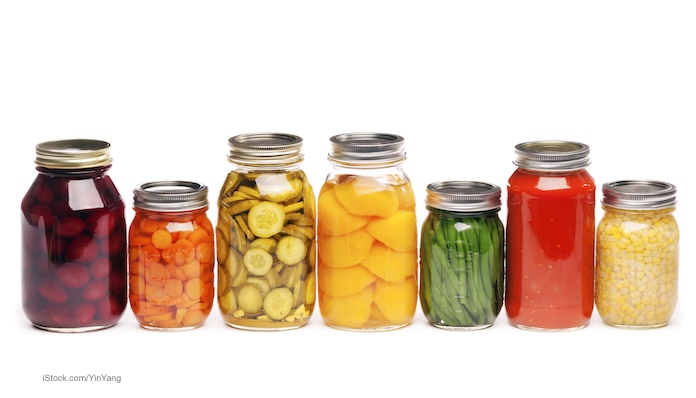Now that the first frost has occurred, the growing season is over in the upper Midwest. Many people are canning foods from their garden and those items purchased at farmers’ markets. But you need to know these tips for avoiding botulism when canning foods at home.

Canning means you are enclosing food in an anaerobic environment: there is little to no air inside the jars. When combined with low acid foods, such as asparagus, green beans, beets, corn, potatoes, some kinds of tomatoes, figs, meats, fish, and seafood, this creates the perfect environment for the growth of Clostridium botulinum spores.
Like most pathogens and the toxins they produce, botulism toxin will not change the taste, appearance, texture, or aroma of food. And it takes just a tiny amount to cause paralysis and death.
Symptoms of botulism food poisoning need to be treated immediately at a hospital. There is an antidote, but it must be administered in a hospital setting.
Symptoms of botulism include double vision, blurred vision, drooping eyelids, slurred speech, difficulty swallowing, dry mouth, and muscle weakness. These symptoms progress as the toxin starts affecting nerves and muscles. Eventually, the patient will be unable to breathe.
So, to protect yourself and your family if you choose to home can foods, follow these tips. First, use proper canning techniques. Follow instructions in the USDA Complete Guide to Home Canning. Don’t get tips from cookbooks and pamphlets, which may be inaccurate. You can also call your state or county extension service for the most accurate information.
Second, use the proper equipment. When canning low acid foods from the list above, you must pressure can. That means using specialized equipment. Do not use boiling water to process these low acid foods because that method will not kill the Clostridium botulinum bacteria or spores.
And if you are at all unsure whether the food you are eating has been safely canned, or if you have had any problems while canning, throw the food out. Signs of improperly processed cans and jars include: the container is leaking, bulging, or swollen; it is cracked or looks abnormal; the container spores liquid or foam when opened; or the food is discolored or moldy or smells bad.
If any of the food from questionable cans or jars spills, wipe the spill up using a solution of 1/4 cup bleach to 2 cups of water.
Finally, never ever taste food to see if it’s safe to eat. Now that you know these tips for avoiding botulism when home canning, you can be sure that the food you prepare is safe to eat.




